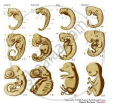Advertisements
Advertisements
Question
Name the parts shown in the diagram.
Human jaw

Solution
Wisdom teeth
RELATED QUESTIONS
(a) Select the homologous structures from the combinations given below:
(i) Forelimbs of whales and bats
(ii) Tuber of potato and sweet potato
(iii) Eyes of octopus and mammals
(iv) Thorns of Bougainvillea and tendrils of Cucurbita
(b) State the kind of evolution they represent.
Study the following statements:-
I. Wings of birds and wings of bats are homologous organs.
II. Wings of birds and wings of insects are modified forelimbs.
III. Wings of birds and wings of insects are analogous organs.
IV. Wings of birds and forelimbs of horse are homologous organs.
The correct statements are
(A) I and II
(B) II and III
(C) III and IV
(D) I and IV
Which of the following pairs of two vegetables represent the correct homologous structures?
(A) Sweet potato and potato
(B) Sweet potato and tomato
(C) Carrot and potato
(D) Radish and carrot
“Two areas of study namely 'evolution' and 'classification' are interlinked'. Justify this statement.
Find out from newspapers and popular science articles any new fossil discoveries or controversies about evolution.
Explain with an example for the given, how the following provides evidence in favor of evolution in organisms :
Analogous organs
Explain the evolution of giraffe's neck according to Lamarck's theory of evolution.
Human tailbone is a vestigial organ. Explain.
Name two animals having homologous organs and two having analogous organs. Name these organs.
Out of bacteria, spider, fish and chimpanzee, which organism has a better body design in evolutionary terms? Give reason for your answer.
The organs P and Q of two animals have different structures but similar functions. On the other hand, the two organs R and S of two other animals have the same basic structure but different functions.
(a) What are the organs like P and Q known as?
(b) Name the organs like P and Q. Also name the animals which have such organs.
(c) What are the organs like R and S called?
(d) Name the organs like R and S. Also name the animals which have such organs.
Identify the following pairs as homologous and analogous organs:
(i) Sweet potato and potato
(ii) Eye of octopus and eye of mammals
(iii) Thorns of Bougainvillaea and tendrils of Cucurbits
(iv) Fore limbs of bat and whale
In a class, students were asked to observe the models/slides/pictures of the skeletons of forelimbs and wings of different organisms. After the observations the students made the following groups of homologous structures. Select the correct group :
(A) Wings of a bird and a butterfly
(B) Wings of a pigeon and a bat
(C) Wings of a butterfly and a bat
(D) Forelimbs of a cow, a duck and a lizard
What do we call the degenerated or partially developed useless organs in living organisms? Enlist such organs in human body? How the same organs are useful in other animals?
Read the following statement and justify same in your own words with the help of suitable example.
There is evidences of fatal science among chordates.
Observe the picture and answer the following questions.
A) Which evidence of evolution is shown in the picture?
B) What can be proven with this proof?
C) Give one more example of evidence of evolution
Choose the correct option of the following question:
Wings of Insect and Birds are examples of :
Answer the following question:
What are homologous structures? Give an example. Is it necessary that homologous structures always have a common ancestor? Justify your answer.
Short answer question.
Give the significance of fossils.
Similarities in the initial stages indicate the _______ evidence.
Find an odd one out.
Appendix : vestigial organ : : Peripatus : ____________
Give scientific reason.
Peripatus is said to be the connecting link between Annelida and Arthropoda.
Write a short note:
Embryological evidences
Which evidence of evolution is shown in the given picture? Explain the importance of this evidence.

A human hand, a front leg of a cat, a front flipper of a whale and a bat’s wing look dissimilar and adapted for different functions. What is the name given to these organs?
How do you differentiate homologous organs from analogous organs?
Homologous organs and vestigial organs are examples of ______ type of evidence in evolution.
Where is carbon dating used?
- Define vestigial organs.
- Write names of any two vestigial organs in the human body.
- Write name of those animals in which these vestigial organs are functional.
Homologous organs are:
Flippers of Penguins and Dolphins are examples of:
Organs having similar functions but different origin and development are known as:
The bones of forelimbs of whale, bat, cheetah and man are similar in structure, because ______.
What were the characteristics of life forms that had been fossilised?
How do we compute the age of a fossil?
Complete the following diagram:

Find odd one out:
Industrial melanism in England after 1850 is an excellent example of Natural selection. Explain how?
